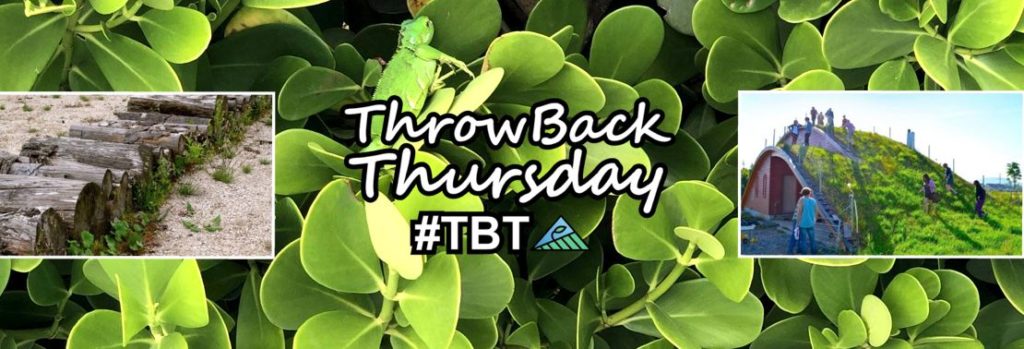By Haven Kiers, Design Editor
Chic Sustainability Column
11/25/13
Originally published in the Fall 2013 issue of Pacific Horticulture; reprinted with permission.
Author’s Note: In June 2013, I had the opportunity to travel to Switzerland with a group of fifteen San Francisco, Portland [OR], and Philadelphia green roof professionals including city planners, policy makers, architects, and landscape architects through a study tour organized by Swissnex, San Francisco. We visited green roofs and walls around Basel and Zurich and learned about the Swiss method of green roof construction.
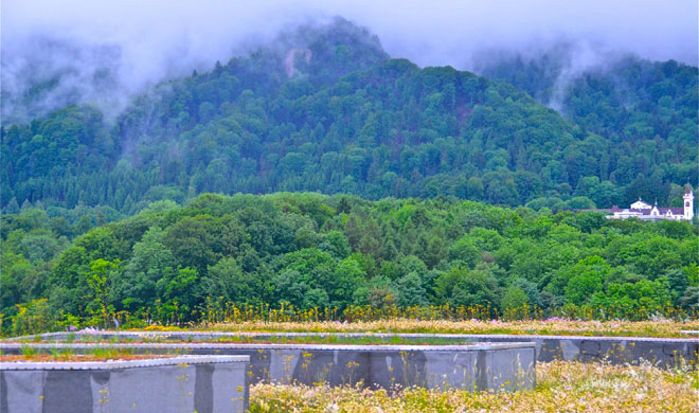
The prolific green roofs of Switzerland’s major cities meld even their most industrial edges with the surrounding landscape. Photo: Jeff Joslin.
If the phrase “green roof technology” calls to mind ice cube-like trays sandwiched between layers of plastic sheeting and synthetic fibrous mats topped with highly engineered growing medium and a pre-grown sedum carpet, you’re not alone. This is an apt description of most American green roofs and the economic backbone of the contemporary green roof industry. So this past summer when several Bay Area living architecture specialists were invited to travel and learn about green roof planting and policy in Switzerland, we thought we knew what to expect.
Instead, we were introduced to the polar opposite of what we had anticipated. There were no systems, no plastic trays, no manufactured “moisture retention layers,” or synthetic filter fabrics. The Swiss green roofs that we toured employed a simple layering of straw, or China reed (Miscanthus sinensis), topped with native soil from the site (sometimes mixed with lava rock or gravel), and planted with a wildflower seed mixture. That’s it.
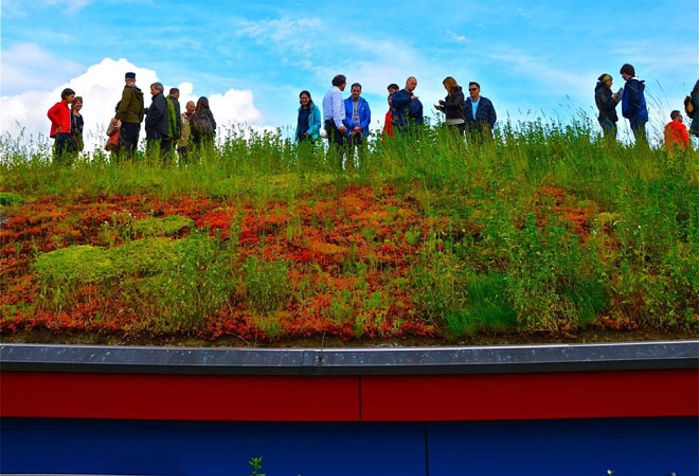
This project for a roofing company in Sins, Switzerland, is integrated with ponds, hydroponics, and solar technology, demonstrating the flexibility and potential synchronicity of such systems. Photo: Jeff Joslin.
And these green roofs were spectacular! They were nothing like the sedum-covered extensive roofs that look so much alike you can’t tell whether they’re from Boston or Berkeley. One 100-year-old roof boasted 175 different species of flora, including 10 species of endangered orchids native to the wet meadow regions of Switzerland. Another provided habitat for ground-nesting lapwings, a native bird population that has been decimated by foxes and urban growth at ground level. And still others provided pollinator plants for local bees and butterflies. The roofs were literally teeming with wildlife—from the tiniest spiders hidden in a nook of a rotten log to the sheep grazing on top of a small family farm building.
Swiss policy dictates that most new construction must include green roofs. What is interesting is that the motivation for requiring green roofs in Switzerland has very little to do with energy savings, reduction of the urban heat island effect, or extending the life of the roof membrane.
Instead, the main driver is promoting biodiversity—typically an afterthought on North American green roof projects. The Swiss understand the benefits of creating a lasting ecology on the roof by providing habitat for the plants and animals that will make it thrive. Through basic principles of soil science and horticulture, they are employing effective technologies that allow roofs to develop their own ecosystems over time.
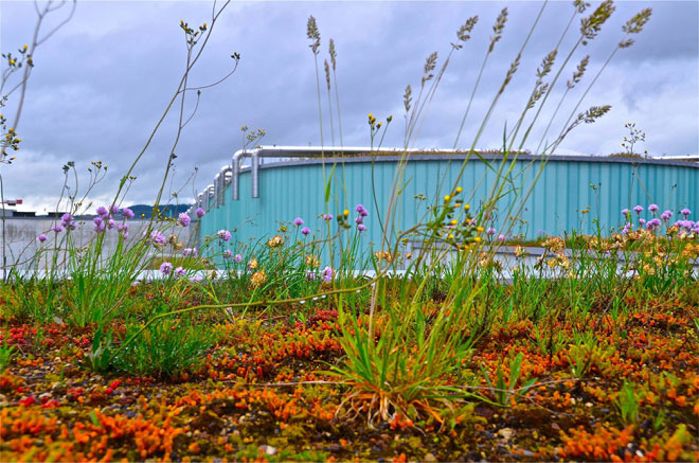
Planting on Zurich’s Sihlcity shopping mall roof. Photo: Jeff Joslin.
Here are a few of the lessons we brought back with us:
A green roof doesn’t need to have an expensive “system” in order to work effectively.
Swiss green roofs cost significantly less than their American counterparts, primarily because they don’t rely on manufactured systems that require you to purchase a variety of components regardless of the roof ’s particular needs. None of the sites we visited used a plastic system to artificially create the layers of a green roof, and all them functioned perfectly well without it—including ones that had been around for over 100 years. The roofs we saw were neither flashy nor expensive. Instead, they incorporated straw or gravel for drainage—materials that are readily available, cheap, and work better to create a sustainable ecosystem on the roof.
Don’t let a “what if ” distract you from the “what can be.”
Local substrates are far more effective at creating healthy ecosystems than engineered soils.
Integrating displaced soil from the site as a part of a roof ’s substrate helps recreate previously existing habitat. Native soils can then be mixed with sand, lava rock, or loam in order to meet specific ecological needs on the roof. Lightweight, engineered soils create sterile, harsh environments for microorganisms and insects.
Plant roofs with perennial and annual seeds and ephemerals that will thrive in the local climate.
We need to start observing our local ecologies and landscapes and incorporating these plant palettes into our roofs. It is not necessary to install pre-grown green roof plants. We can take the time to plant some seeds and see what works and what doesn’t. The Swiss are patient. They are willing to wait for a finished product and are not nearly as addicted to the principles of instant gratification as we Americans are. We need to be willing to experiment and go beyond both the “natives only” and “sedum mat” dominating dogmas.
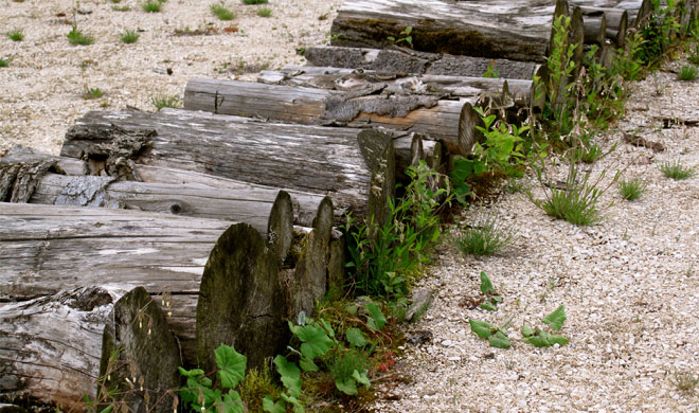
Logs and stones provide habitat niches for fauna on a green roof in St. Gallen. Photo: Lisa Lee Benjamin.
Green roofs don’t have to be green.
If biodiversity is your main driver, plant coverage is not always the most important component of a green roof. Open substrates provide habitat for nesting bees and other insects and can vary in height and depth. Branches, logs, and rocks can provide visual interest while simultaneously improving habitat value on the roof with annual seeds providing short bursts of seasonal color.
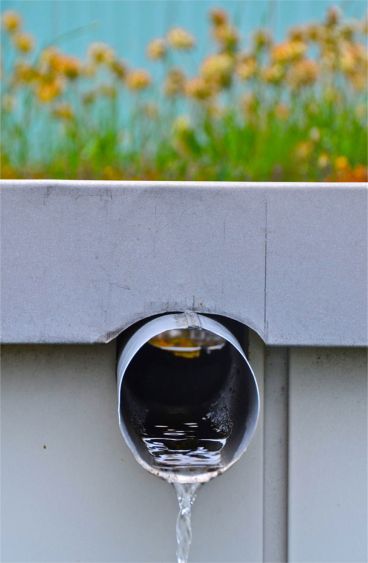
A simple overflow system ensures drainage and water transfer between planted roof areas at the Sihlcity shopping mall in Zurich, Switzerland. Photo: Jeff Joslin.
There is nothing to be afraid of.
The North American green roof industry is built on fear. Fear that the roof will leak and the building will collapse. Fear that the plants will die. Fear that the green roof will cost too much money. The greater the fear, the more “mitigating” products can be sold. If we just trust our informed instincts, we’ll be so much better off. The reality is that as long as you have a solid underlying structure and a competent roof membrane, the rest doesn’t need to be complicated.
Don’t let a “what if ” distract you from the “what can be.”
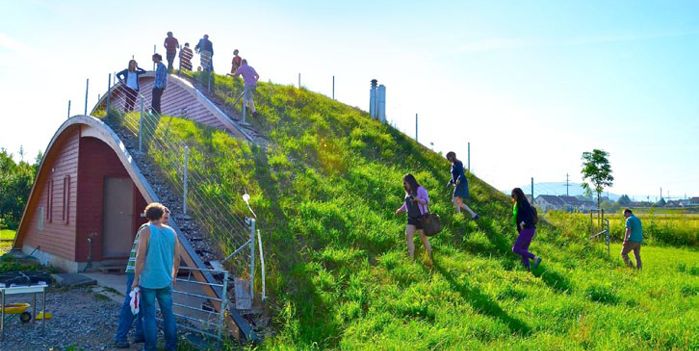
Agricultural green roofs, like this one in Mohlin, provide additional area for crops and grazing. Photo: Jeff Joslin.
~ Haven Kiers
Publisher’s Note: See “Back to Nature ~ An Alternative Approach to Planting Green Roofs” in PDF from Pacific Horticulture Magazine.
Haven Kiers, Design Editor
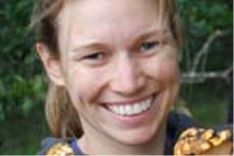
Haven Kiers, MLA, LEED AP, GRP, is Greenroofs.com’s Design Editor (2005). She writes the occasional column “Chic Sustainability,” and co-writes and co-presents the annual “Top 10 List of Hot Trends in Greenroof & Greenwall Design” series with Linda Velazquez. She feels the “Greenroof challenge lies in finding the right balance between idealistic principles and cutting edge design.”
Haven is a Mom and lives and works in Davis, California, with her husband, daughter, and son. Haven is a lecturer in landscape architecture at UC Davis and the special projects manager at the UC Davis Arboretum. She received her bachelor’s degree from Brown University and her Master of Landscape Architecture from UC Berkeley and has worked as a landscape architect, a city and environmental planner, and a consultant. Haven designs and presents nationally about greenroofs and other green infrastructure, and is also a trainer for the Green Roofs for Healthy Cities Green Roof 101, 201, & 401 Courses.
Contact Haven Kiers at:
DesignEditor@greenroofs.com
 Greenroofs.comConnecting the Planet + Living Architecture
Greenroofs.comConnecting the Planet + Living Architecture


